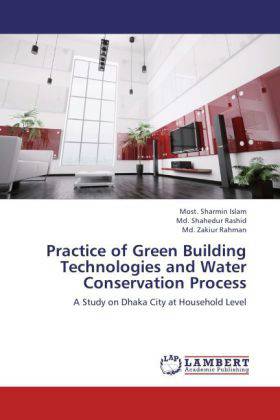
- Afhalen na 1 uur in een winkel met voorraad
- Gratis thuislevering in België vanaf € 30
- Ruim aanbod met 7 miljoen producten
- Afhalen na 1 uur in een winkel met voorraad
- Gratis thuislevering in België vanaf € 30
- Ruim aanbod met 7 miljoen producten
Practice of Green Building Technologies and Water Conservation Process
A Study on Dhaka City at Household Level
Most. Sharmin Islam, Md. Shahedur Rashid, Md. Zakiur Rahman
Paperback | Engels
€ 60,95
+ 121 punten
Omschrijving
As the world s population continues to expand, implementation of resource-efficient measures in all areas of human activity is imperative. The built environment is one clear example of the impact of human activity on resources. Buildings have a significant impact on the environment. This study was carried out on October 10 to March 11. The objectives of this study ware to reduce water consumption, to reduce the loss and waste of water, to reduce cost and to improve efficiency in the use of water in green buildings. It was done by data collection and data analysis which were collected by personal interview and published documents. From the study it was revealed that by applying more efficient devices potential water, energy and cost savings can be obtained. A green building may cost more up, but saves through lower operating costs over the life of the building. The green building approach applies a project life cycle cost analysis for determining the appropriate up-front expenditure. This analytical method calculates costs over the useful life of the asset.
Specificaties
Betrokkenen
- Auteur(s):
- Uitgeverij:
Inhoud
- Aantal bladzijden:
- 88
- Taal:
- Engels
Eigenschappen
- Productcode (EAN):
- 9783847318828
- Verschijningsdatum:
- 8/08/2012
- Uitvoering:
- Paperback
- Afmetingen:
- 152 mm x 229 mm
- Gewicht:
- 141 g

Alleen bij Standaard Boekhandel
+ 121 punten op je klantenkaart van Standaard Boekhandel
Beoordelingen
We publiceren alleen reviews die voldoen aan de voorwaarden voor reviews. Bekijk onze voorwaarden voor reviews.








